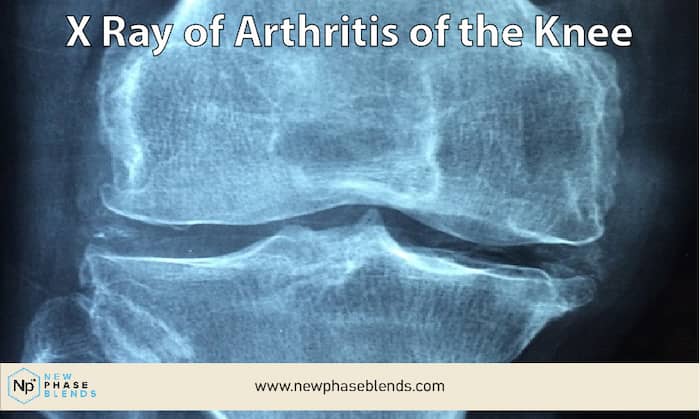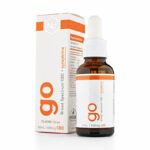Living with arthritis can transform even the simplest daily activities into painful challenges. For the 54 million Americans with this condition—many of them seniors—finding effective pain management solutions often becomes a lifelong journey. While traditional medications remain the standard treatment, an increasing number of seniors are turning to CBD (cannabidiol) products for potential relief.
This comprehensive guide explores how CBD might help seniors manage arthritis pain, particularly through topical applications, while addressing common concerns about safety, efficacy, and proper usage. As leaders in natural wellness education for over a decade, we’ve witnessed firsthand how CBD has emerged as a complementary option for arthritis management. By the end of this article, you’ll understand the potential benefits of CBD for arthritis, how to select quality products, and practical ways to incorporate CBD into an existing pain management plan.
Understanding Arthritis in Seniors
Arthritis isn’t simply an inevitable part of aging—it’s a complex condition that affects seniors in distinct ways. The two most common types affecting older adults are osteoarthritis and rheumatoid arthritis, each with unique characteristics and challenges.
How Arthritis Affects the Senior Population

Osteoarthritis, often called “wear and tear” arthritis, develops when joint cartilage breaks down over time, causing pain, stiffness, and decreased mobility. It typically affects weight-bearing joints like knees, hips, and the spine. As we age, our bodies produce less synovial fluid (the natural joint lubricant), which accelerates this deterioration.

Rheumatoid arthritis, conversely, is an autoimmune condition where the immune system mistakenly attacks the joints, causing inflammation, pain, and potential joint deformity. For seniors with rheumatoid arthritis, this inflammation can lead to more severe symptoms during flare-ups, significantly impacting quality of life.
Both conditions create unique challenges for seniors:
- Decreased independence due to limited mobility
- Difficulties with self-care activities like dressing or cooking
- Reduced participation in beloved hobbies and social activities
- Sleep disruption from persistent pain
- Potential polypharmacy issues when managing multiple medications
Understanding these specific challenges helps explain why many seniors seek complementary approaches like CBD to enhance their arthritis management strategies.
The Science Behind CBD and Arthritis
To appreciate CBD’s potential role in arthritis management, it’s important to understand how it interacts with the body’s systems that regulate pain and inflammation.
How CBD Works in the Body
Cannabidiol (CBD) interacts with the endocannabinoid system (ECS), a complex cell-signaling network that helps regulate numerous bodily functions, including pain sensation, immune response, and inflammation. The ECS consists of endocannabinoids (natural compounds similar to those found in cannabis), receptors, and enzymes.
When introduced to the body, CBD doesn’t directly bind to the main cannabinoid receptors (CB1 and CB2) but instead influences them indirectly while also interacting with non-cannabinoid receptors involved in pain signaling. This multi-target approach explains why CBD might address several arthritis symptoms simultaneously.
Research on CBD for Arthritis Pain
While research specifically on seniors with arthritis remains limited, several studies suggest CBD’s potential benefits:
A 2017 study published in the journal Pain found that CBD prevented osteoarthritis pain and nerve damage in rats. Another 2016 study applying topical CBD to rats with arthritis showed reduced inflammation and pain behaviors without evident side effects.
Human studies, while fewer in number, also show promise. A 2020 survey of arthritis patients using CBD found that over 80% reported some level of improved pain and physical function. However, it’s important to note that large-scale clinical trials specifically targeting seniors with arthritis are still developing.
The Arthritis Foundation’s position acknowledges the interest in CBD while calling for more research, stating: “We are intrigued by the potential of CBD to help people find pain relief and are on record urging the FDA to expedite study of CBD products.”
CBD as a Topical Pain Reliever for Arthritis
For seniors concerned about systemic effects or medication interactions, topical CBD products offer a targeted approach to pain management.
How Topical CBD Works for Joint Pain
When applied directly to the skin over painful joints, CBD creams, balms, and lotions work locally rather than circulating throughout the entire body. The skin has its own endocannabinoid receptors, allowing topical CBD to interact with the local tissue without significantly entering the bloodstream.
This localized action makes topical CBD particularly appealing for arthritis pain for several reasons:
- Targets specific pain points without affecting the whole body
- May reduce inflammation directly in affected joints
- Potentially fewer concerns about drug interactions compared to oral CBD
- Often combined with complementary ingredients like menthol or arnica for enhanced relief
Research published in the European Journal of Pain using animal models found that topical CBD application reduced arthritis-related pain and inflammation. The targeted nature of topical applications allows for higher concentrations of CBD to reach the specific affected areas compared to oral consumption.
Choosing the Right Topical CBD Products
When selecting a CBD topical for arthritis pain, several factors deserve careful consideration:
CBD concentration: Products typically range from 100mg to 2000mg per container. For arthritis pain, higher concentrations (500mg and above) may provide more noticeable relief, though starting with moderate strength is often recommended.
Full-spectrum vs. CBD isolate: Full-spectrum products contain additional cannabinoids and terpenes that may enhance CBD’s effects through the “entourage effect.” However, isolate products containing only CBD might be preferable for those concerned about THC content.
Additional ingredients: Many effective CBD topicals combine cannabidiol with traditional pain-relieving ingredients like menthol, camphor, or arnica. These formulations may provide more immediate sensations of coolness or warmth while the CBD addresses underlying inflammation.
Texture and application: Creams and lotions absorb quickly and work well for daily use, while thicker balms and salves tend to provide longer-lasting effects. Consider your personal preference and the locations of your arthritis pain when choosing.
Practical Guide to Using CBD for Arthritis
Incorporating CBD into an arthritis management plan requires thoughtful consideration and proper technique to maximize potential benefits.
Proper Application Methods for Topical CBD
To get the most from topical CBD products, follow these best practices:
- Start with clean, dry skin for maximum absorption
- Apply a generous amount directly to the painful joint area
- Massage gently until the product is absorbed
- Wash hands thoroughly after application (unless treating hand arthritis)
- Apply consistently, typically 2-3 times daily or as needed
For optimal results, maintain a regular application schedule rather than using topicals only during severe pain episodes. Many seniors find applying after morning and evening showers, when pores are open, enhances absorption.
Type: CBD oil for energy
CBD: 16mg per serving
Features: Synephrine and CBD blend for energy & focus enhancement
Finding the Right Dosage
Unlike prescription medications, CBD doesn’t come with standardized dosing guidelines. For topicals, this means starting with the manufacturer’s recommended amount and adjusting based on your response.
Dr. Kevin Boehnke, a researcher at the University of Michigan who studies CBD and chronic pain, suggests: “Start low and go slow. Begin with a small amount applied once daily, then gradually increase frequency and amount until you find your sweet spot.”
Most seniors report needing consistent use for 1-2 weeks before judging a product’s effectiveness. Keeping a simple journal tracking your pain levels, application times, and amount used can help identify your optimal regimen.
Integrating CBD with Traditional Arthritis Treatments
CBD works best as part of a comprehensive arthritis management plan rather than as a standalone solution.
Complementary Approaches
Many seniors find the most success when combining CBD with traditional arthritis treatments:
Physical therapy: CBD topicals may help reduce pain enough to participate more fully in beneficial physical therapy exercises.
Prescription medications: Some research suggests CBD might enhance the effects of certain pain medications, potentially allowing for lower doses (though this should only be considered under medical supervision).
Heat and cold therapy: Applying CBD before heat treatments may enhance blood flow to the affected areas, while using it before cold therapy might compound anti-inflammatory effects.
Mind-body practices: CBD’s potential anxiety-reducing properties could enhance the benefits of relaxation techniques like meditation or gentle yoga for arthritis.
Talking to Your Doctor About CBD
Open communication with healthcare providers is essential when considering CBD. While some physicians may have limited knowledge about cannabinoids, an increasing number are becoming educated on the topic.
Before your appointment:
- Research the specific CBD product you’re considering
- Bring a list of your current medications to discuss potential interactions
- Prepare specific questions about how CBD might complement your current treatment plan
- Consider asking for a referral to a healthcare provider knowledgeable about cannabis if your primary doctor has limited experience
Most healthcare providers appreciate patients who take an active role in their care decisions and will work with you to safely incorporate complementary approaches like CBD.

Safety Considerations for Seniors Using CBD
While CBD generally has a favorable safety profile, seniors should be particularly mindful of certain considerations.
Potential Drug Interactions
CBD can affect how the body processes certain medications, particularly those metabolized by the cytochrome P450 enzyme system in the liver. This includes many common medications prescribed to seniors, such as:
- Blood thinners like warfarin
- Certain heart rhythm medications
- Some seizure medications
- Many statins for cholesterol management
While topical CBD typically has less potential for drug interactions than oral forms, discussing all CBD use with healthcare providers remains important.
Special Considerations for Seniors
Age-related physiological changes can affect how seniors respond to CBD:
Skin changes: Aging skin tends to be thinner and less hydrated, potentially increasing absorption of topical products. Starting with lower concentration products may be prudent.
Sensitivity: Some seniors report greater sensitivity to cannabis compounds, necessitating lower initial doses.
Multiple medications: The more medications you take, the more important it is to consult healthcare providers about potential interactions.
Real-World Applications: How Seniors Are Using CBD for Arthritis
Many seniors have developed personalized approaches to incorporating CBD into their arthritis management routines.
Daily Routines
Common patterns among seniors successfully using CBD for arthritis include:
Morning application: Many apply topical CBD after morning showers to help ease morning stiffness and improve mobility throughout the day.
Activity preparation: Applying CBD 30-60 minutes before planned activities or exercise can help make movement more comfortable.
Evening wind-down: Nighttime application often helps reduce pain that might otherwise interfere with sleep.
Conclusion
CBD represents a promising complementary approach for seniors managing arthritis pain, particularly through topical applications that target specific joints without systemic effects. While research continues to evolve, many seniors report meaningful improvements in pain, function, and quality of life when using high-quality CBD products as part of a comprehensive arthritis management plan.
As with any wellness decision, the choice to try CBD should be personal, informed, and made in consultation with healthcare providers. By understanding the science behind CBD, knowing how to select quality products, and learning proper application techniques, seniors with arthritis can make educated decisions about whether CBD might be a valuable addition to their pain management toolkit.
Remember that consistency is key—most seniors who benefit from CBD for arthritis find that regular, ongoing use provides better results than occasional applications during pain flares. With proper education and medical guidance, CBD may offer another option in the often-challenging journey of arthritis management.














